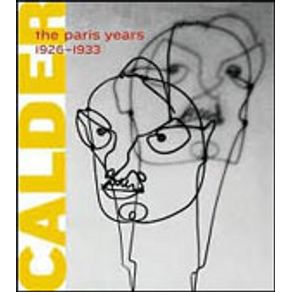Calder, who arrived in Paris in 1926 as an Ashcan School realist painter with a degree in engineering, came into his own there as a central figure of the Modern movement. He became known in avant-garde circles for his wire figures and portraits (many represented here), toys and jewelry. Between 1926 and 1931, he built the 70 figures that compose Calder's Circus, which he displayed through 1961. A visit to Piet Mondrian's studio in 1930 provided a shock that started the abstract explorations that led to the mobiles for which he is best known. Simon and Leal, curators respectively at the Whitney Museum of American Art, and the Pompidou Center, collect eight essays in this catalogue for an exhibition opening in October at the Whitney; the writings examine Calder as illustrator, surrealist and abstractionist. His Circus is examined in depth by Eleonora Nagy, its conservator, and Henry Petroski, who looking at Calder's engineering background likens the Circus in performance to the workings of an internal combustion engine. Both art professionals and the artist's many fans will find much to appreciate here.


